Related Research Articles
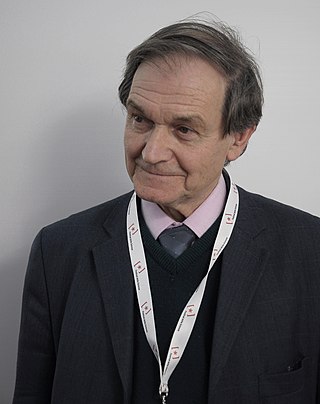
Sir Roger Penrose is a British mathematician, mathematical physicist, philosopher of science and Nobel Laureate in Physics. He is Emeritus Rouse Ball Professor of Mathematics in the University of Oxford, an emeritus fellow of Wadham College, Oxford, and an honorary fellow of St John's College, Cambridge and University College London.
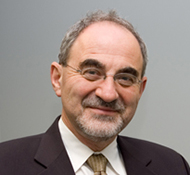
Eli Yablonovitch is an American physicist and engineer who, along with Sajeev John founded the field of photonic crystals in 1987. He and his team were the first to create a 3-dimensional structure that exhibited a full photonic bandgap, which has been named Yablonovite. In addition to pioneering photonic crystals, he was the first to recognize that a strained quantum-well laser has a significantly reduced threshold current compared to its unstrained counterpart. This is now employed in the majority of semiconductor lasers fabricated throughout the world. His seminal paper reporting inhibited spontaneous emission in photonic crystals is among the most highly cited papers in physics and engineering.

Anton Zeilinger is an Austrian quantum physicist and Nobel laureate in physics of 2022. Zeilinger is professor of physics emeritus at the University of Vienna and senior scientist at the Institute for Quantum Optics and Quantum Information of the Austrian Academy of Sciences. Most of his research concerns the fundamental aspects and applications of quantum entanglement.
Francis Edwin Close, is a particle physicist who is Emeritus Professor of Physics at the University of Oxford and a Fellow of Exeter College, Oxford.
Philip St. John Russell, FRS, is Emeritus Director of the Max Planck Institute for the Science of Light in Erlangen, Germany. His area of research covers "photonics and new materials", in particular the examination of new optical materials, especially of photonic crystal fibres, and more generally the field of nano- and micro-structured photonic materials.

Isamu Akasaki was a Japanese engineer and physicist, specializing in the field of semiconductor technology and Nobel Prize laureate, best known for inventing the bright gallium nitride (GaN) p-n junction blue LED in 1989 and subsequently the high-brightness GaN blue LED as well.

Dame Frances Clare Kirwan, is a British mathematician, currently Savilian Professor of Geometry at the University of Oxford. Her fields of specialisation are algebraic and symplectic geometry.
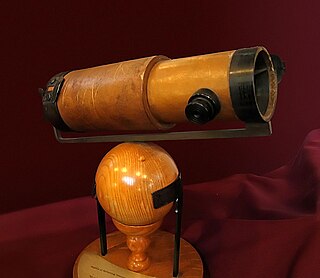
The Isaac Newton Medal and Prize is a gold medal awarded annually by the Institute of Physics (IOP) accompanied by a prize of £1,000. The award is given to a physicist, regardless of subject area, background or nationality, for outstanding contributions to physics. The award winner is invited to give a lecture at the Institute. It is named in honour of Sir Isaac Newton.

Amnon Yariv is an Israeli-American professor of applied physics and electrical engineering at Caltech, known for innovations in optoelectronics. Yariv obtained his B.S., M.S. and PhD. in electrical engineering from University of California, Berkeley in 1954, 1956 and 1958, respectively.

Benjamin John Eggleton FAA, FTSE, FOSA, FIEEE, FSPIE, FAIP, FRSN is Pro Vice Chancellor (Research) at the University of Sydney. He is also Professor in the School of Physics where he leads a research group in photonics, nanotechnology and smart sensors and serves as Co-Director of the NSW Smart Sensing Network (NSSN).
Donal Donat Conor Bradley is the Vice President for Research at King Abdullah University of Science and Technology (KAUST), Saudi Arabia. From 2015 until 2019, he was head of the Mathematical, Physical and Life Sciences Division of the University of Oxford and a Professor of Engineering Science and Physics at Jesus College, Oxford. From 2006 to 2015, he was the Lee-Lucas Professor of Experimental Physics at Imperial College London. He was the founding director of the Centre for Plastic Electronics and served as vice-provost for research at the college.

Tanya Mary Monro FOSA FAIP GAICD is an Australian physicist known for her work in photonics. She has been Australia's Chief Defence Scientist since 8 March 2019. Prior to that she was the Deputy Vice Chancellor, Research and Innovation (DVCR&I) at the University of South Australia. She was awarded the ARC Georgina Sweet Australian Laureate Fellowship in 2013. She was the inaugural chair of photonics, the inaugural director of the ARC Centre of Excellence for Nanoscale Biophotonics and the inaugural director of the Institute for Photonics & Advanced Sensing (IPAS), and the inaugural director of the Centre of Expertise in Photonics (CoEP) within the School of Chemistry and Physics at the University of Adelaide. Monro has remained an adjunct professor of physics at the University of Adelaide following her departure from the institution.

Yuri S. Kivshar, Australian Scientist of Ukrainian origin, distinguished professor, head of Nonlinear Physics Centre of The Australian National University (ANU) and research director of The International Research Centre for Nanophotonics and Metamaterials, Australian Federation Fellow.

Henry James Snaith is a professor in physics in the Clarendon Laboratory at the University of Oxford. Research from his group has led to the creation of a new research field, based on halide perovskites for use as solar absorbers. Many individuals who were PhD students and postdoctoral researchers in Snaith's group have now established research groups, independent research portfolios and commercial enterprises. He co-founded Oxford Photovoltaics in 2010 to commercialise perovskite based tandem solar cells.
The Katharine Burr Blodgett Medal and Prize is a gold medal awarded annually by the Institute of Physics to "recognise contributions to the organisation or application of physics in an industrial or commercial context." The medal is accompanied by a prize of £1000.
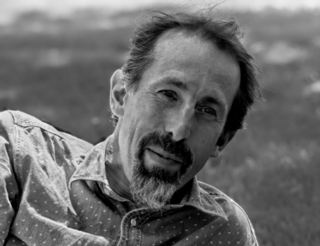
Jeremy John Baumberg, is Professor of Nanoscience in the Cavendish Laboratory at the University of Cambridge, a Fellow of Jesus College, Cambridge and Director of the NanoPhotonics Centre.
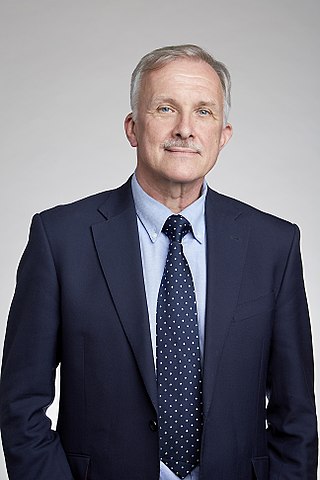
(James) Roy Taylor is Professor of Ultrafast Physics and Technology at Imperial College London.
Richard Anthony Lewis Jones is professor of Materials Physics and Innovation Policy at the University of Manchester having been professor of physics at the University of Sheffield until 2020.
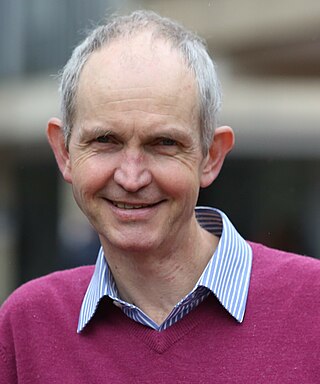
Jonathan C. Knight, is a British physicist. He is the Pro Vice-Chancellor (Research) for the University of Bath where he has been Professor in the Department of Physics since 2000, and served as head of department. From 2005 to 2008, he was founding Director of the university's Centre for Photonics and Photonic Materials.
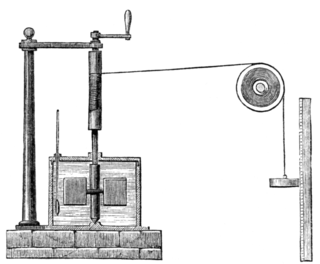
The James Joule Medal and Prize is awarded by the Institute of Physics. It was established in 2008, and was named in honour of James Prescott Joule, British physicist and brewer. The award is made for distinguished contributions to applied physics. The medal is silver and is accompanied by a prize of £1000.
References
- ↑ Jha, Alok (2000), "A flexible approach", Nature , 408 (6812): 621–2, Bibcode:2000Natur.408..621J, doi: 10.1038/35046282 , PMID 11117755 .
- ↑ "The double helix becomes a pyramid", New Scientist , 17 December 2005.
- ↑ Turberfield. Andrew J Archived March 21, 2009, at the Wayback Machine Profile at the University of Oxford
- ↑ Web of Knowledge (requires institutional login) Publications ordered by citation
- ↑ Turberfield, Andrew Archived August 27, 2009, at the Wayback Machine Profile at Magdalen College
- ↑ "2011 Tabor Medal and Prize". Institute of Physics. Retrieved 23 December 2019.